VE Day: What is it, when is it and why do we remember?
What is VE Day?
- Published
VE Day - or Victory in Europe Day - marks the day towards the end of World War Two (WW2) when fighting against Nazi Germany in Europe came to an end.
On 8 May 1945, Prime Minister Winston Churchill made an announcement on the radio at 3pm that the war in Europe had come to an end, following Germany's surrender the day before.
Read on to find out more about what happened on VE Day and how World War Two ended.
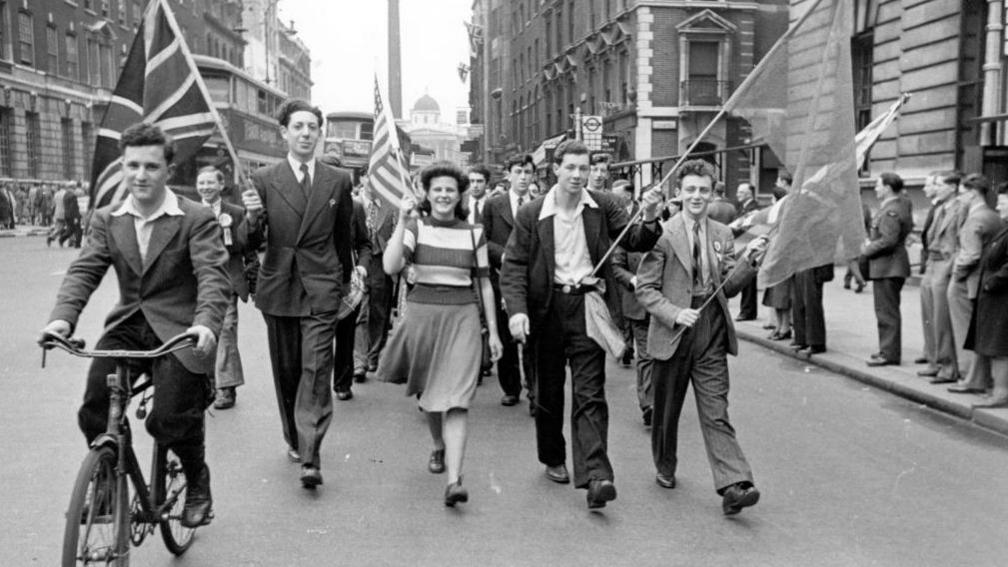
How did World War Two begin?
- Published1 September 2023
King Charles and Queen Camilla to host VE Day tea party
- Published25 April
How is VE Day being marked around the UK?
- Published25 April
How was VE Day celebrated?
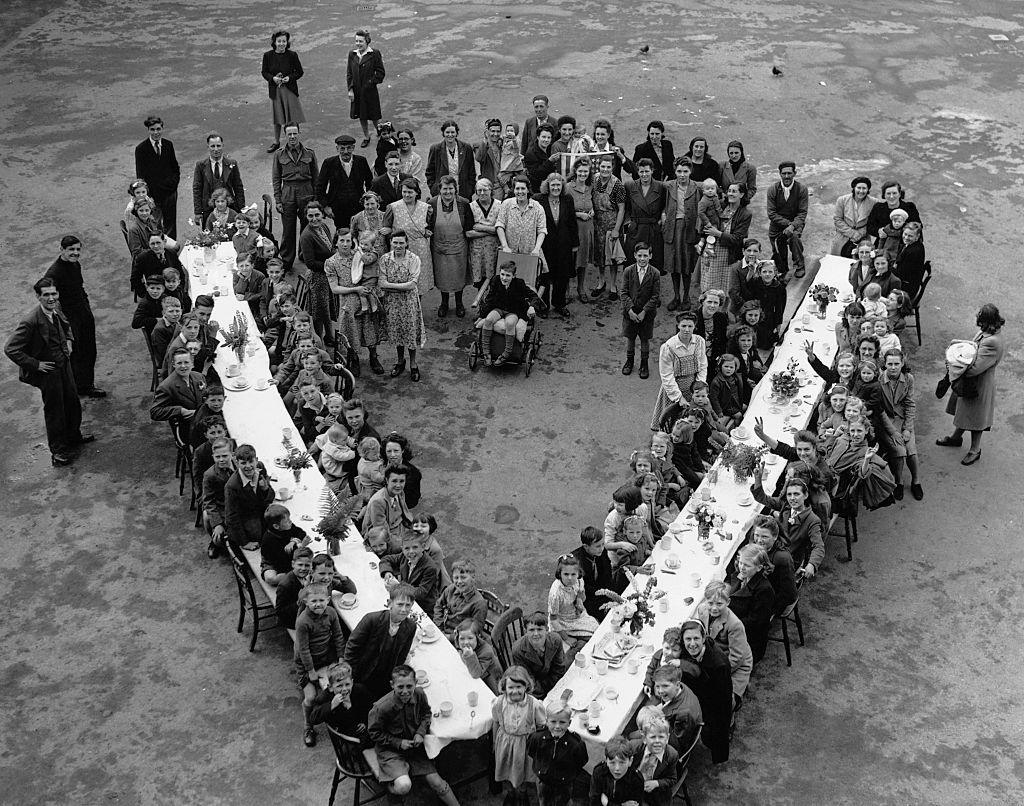
There were street parties like this one to celebrate VE Day
By the beginning of 1945, the German army had been weakened and defeat looked likely.
Prime Minister Winston Churchill announced the end of the war in Europe on the radio on Tuesday 8 May 1945.
Many people were extremely happy that the fighting had stopped and there were big celebrations and street parties.
People also attended church services to thank God for the victory.
VE Day was also a moment of great sadness and reflection, as millions of people had lost their lives or lost loved ones in the conflict.
Many had to continue fighting battles in other parts of the world away from Europe where the war continued.
Lots of people were also being kept as prisoners of war abroad.
What did the Royal family do on VE day?
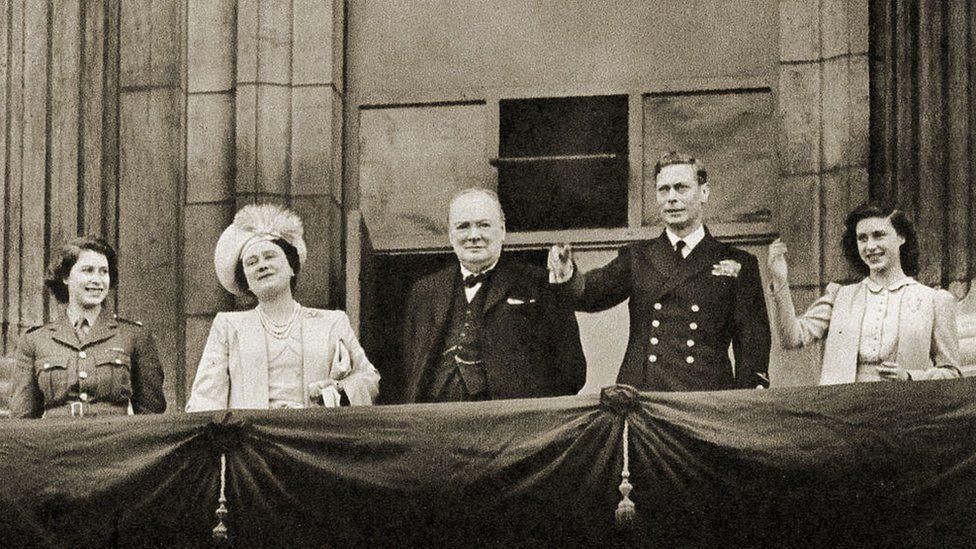
Huge crowds gathered outside Buckingham Palace on VE Day and cheered as King George VI and his family, including Princess Elizabeth who later became Queen Elizabeth II, came out onto the balcony and waved.
Princess Elizabeth and her younger sister Princess Margaret were allowed to go out and celebrate with the crowds though they had to do it secretly.
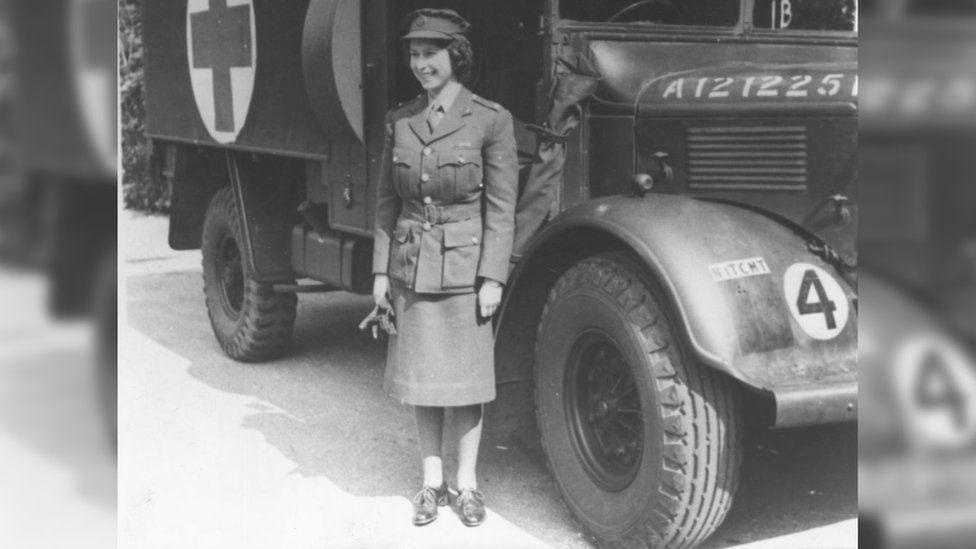
Princess Elizabeth wore her uniform to blend in with the crowds
The future Queen had served as a driver and mechanic during the war for the Auxiliary Transport Service, so she wore her uniform to blend in with the crowds.
In a rare interview with the BBC in 1985, Queen Elizabeth said:
"My sister and I realised that we couldn't see what the crowds were enjoying so we asked my parents if we could go out and see for ourselves.
"I remember lines of unknown people linking arms and walking down Whitehall, all of us just swept along on a tide of happiness and relief," she added.
The sisters even went and danced at The Ritz, a luxury hotel in London. Queen Elizabeth described it as "one of the most memorable nights of my life".
Why did Nazi Germany surrender twice?
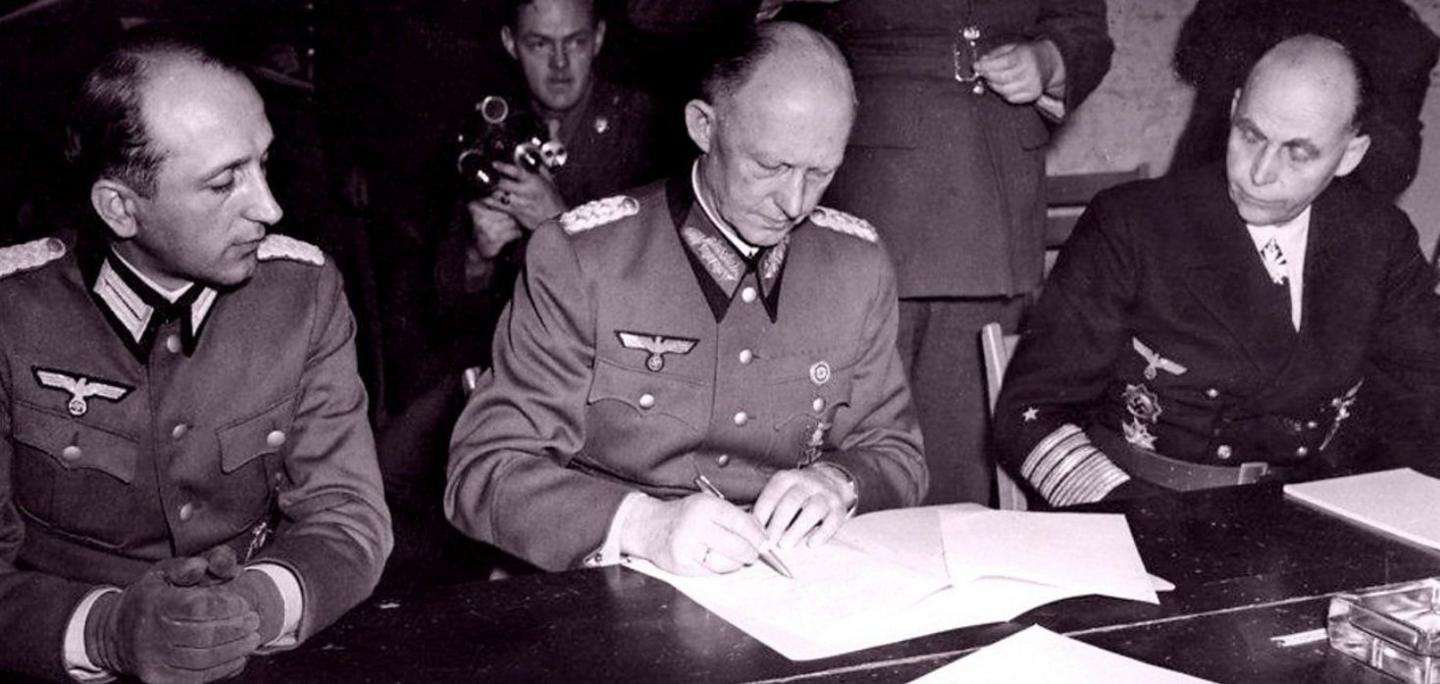
German officials signed the surrender document
It was announced on 1 May 1945 that the leader of Nazi Germany, Adolf Hitler had died.
After Hitler's death, leadership of Nazi Germany passed to other officials.
By this point it was obvious that the war in Europe was coming to an end and that the Nazis had lost.
On 7 May 1945 in Reims, France, Alfred Jodl - a high-ranking general in the Nazi Armed Forces - signed a surrender document in Reims a city in France.
The leader of the Soviet Union, Joseph Stalin - an ally of Britain and America in the war - requested a second document of surrender be signed in Berlin as no high ranking Soviet officials were there.
This was agreed and organised late on 8 May, but because of the time difference in Moscow it was already 9 May which is why Russia marks what it calls Victory Day on 9 May.
What is the difference between VE Day and VJ Day?
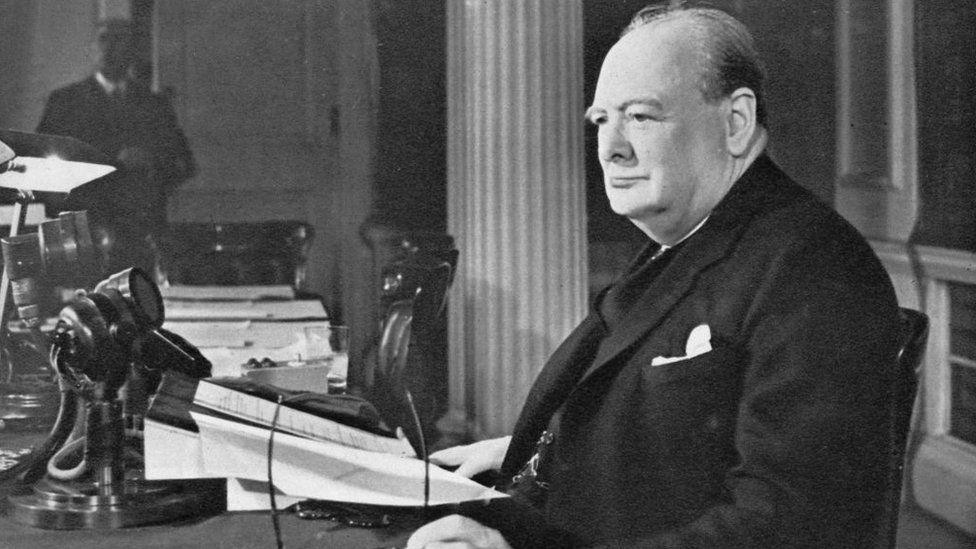
Prime Minister Winston Churchill made the announcement on the radio
Even though VE Day marked victory for Europe over Germany, it did not mark the end of World War Two.
In his VE Day announcement, Winston Churchill said: "We may allow ourselves a brief period of rejoicing, but let us not forget for a moment the toil and efforts that lie ahead."
Even after 8 May, many soldiers, sailors and pilots were sent to fight against Japan, who had not yet surrendered.
This came on 14 August 1945, after two atomic bombs were dropped on the Japanese cities of Hiroshima (6 August) and Nagasaki (9 August).
On 15 August 1945, the allies had officially defeated Japan.
This date is known as Victory over Japan Day or VJ Day.
World War Two was finally over.
Why are poppies worn on VE Day?
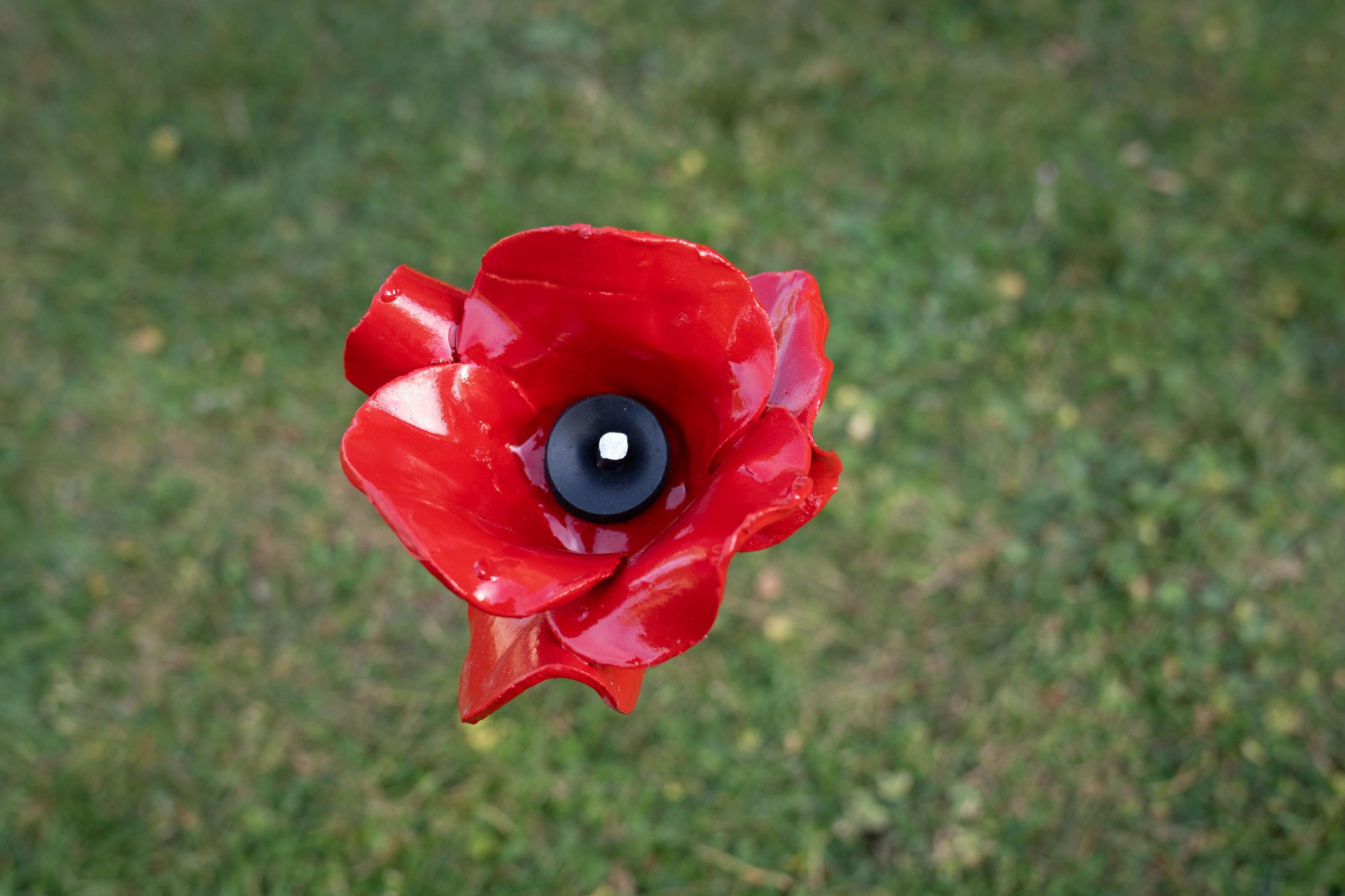
Ceramic poppies like theis will be displayed at the Tower of London to mark VE Day
Poppies are a symbol of remembrance for those who have died in conflicts around the world.
They are most often worn in November for Remembrance Sunday which commemorates people who have died in conflicts since the World War One.
Some people may choose to wear poppies on VE Day to remember and poppies also feature in other VE Day events.
